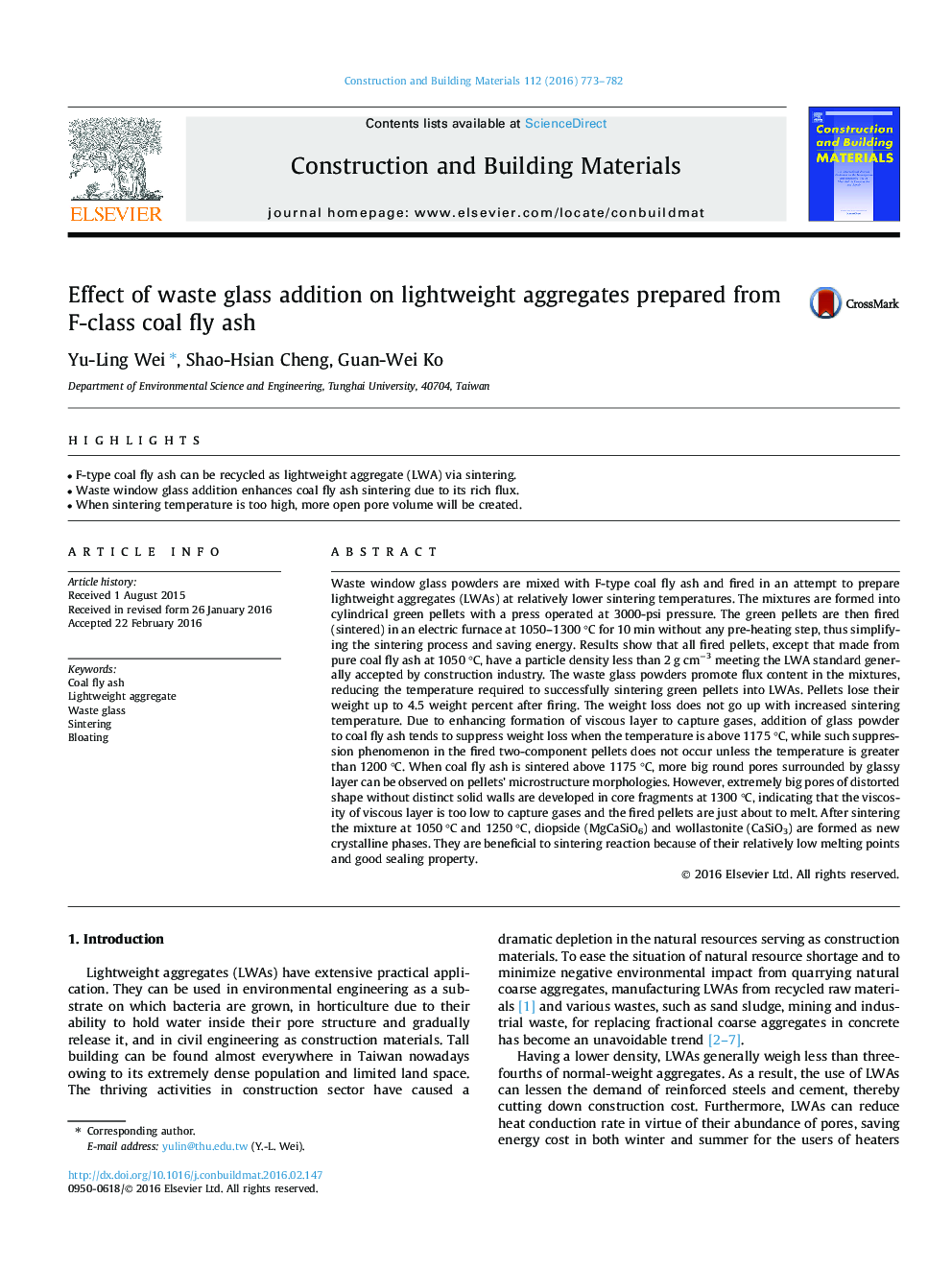| کد مقاله | کد نشریه | سال انتشار | مقاله انگلیسی | نسخه تمام متن |
|---|---|---|---|---|
| 6719320 | 503537 | 2016 | 10 صفحه PDF | دانلود رایگان |
عنوان انگلیسی مقاله ISI
Effect of waste glass addition on lightweight aggregates prepared from F-class coal fly ash
دانلود مقاله + سفارش ترجمه
دانلود مقاله ISI انگلیسی
رایگان برای ایرانیان
کلمات کلیدی
موضوعات مرتبط
مهندسی و علوم پایه
سایر رشته های مهندسی
مهندسی عمران و سازه
پیش نمایش صفحه اول مقاله

چکیده انگلیسی
Waste window glass powders are mixed with F-type coal fly ash and fired in an attempt to prepare lightweight aggregates (LWAs) at relatively lower sintering temperatures. The mixtures are formed into cylindrical green pellets with a press operated at 3000-psi pressure. The green pellets are then fired (sintered) in an electric furnace at 1050-1300 °C for 10 min without any pre-heating step, thus simplifying the sintering process and saving energy. Results show that all fired pellets, except that made from pure coal fly ash at 1050 °C, have a particle density less than 2 g cmâ3 meeting the LWA standard generally accepted by construction industry. The waste glass powders promote flux content in the mixtures, reducing the temperature required to successfully sintering green pellets into LWAs. Pellets lose their weight up to 4.5 weight percent after firing. The weight loss does not go up with increased sintering temperature. Due to enhancing formation of viscous layer to capture gases, addition of glass powder to coal fly ash tends to suppress weight loss when the temperature is above 1175 °C, while such suppression phenomenon in the fired two-component pellets does not occur unless the temperature is greater than 1200 °C. When coal fly ash is sintered above 1175 °C, more big round pores surrounded by glassy layer can be observed on pellets' microstructure morphologies. However, extremely big pores of distorted shape without distinct solid walls are developed in core fragments at 1300 °C, indicating that the viscosity of viscous layer is too low to capture gases and the fired pellets are just about to melt. After sintering the mixture at 1050 °C and 1250 °C, diopside (MgCaSiO6) and wollastonite (CaSiO3) are formed as new crystalline phases. They are beneficial to sintering reaction because of their relatively low melting points and good sealing property.
ناشر
Database: Elsevier - ScienceDirect (ساینس دایرکت)
Journal: Construction and Building Materials - Volume 112, 1 June 2016, Pages 773-782
Journal: Construction and Building Materials - Volume 112, 1 June 2016, Pages 773-782
نویسندگان
Yu-Ling Wei, Shao-Hsian Cheng, Guan-Wei Ko,